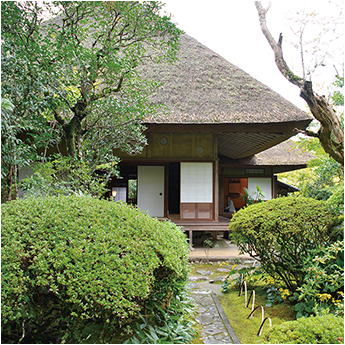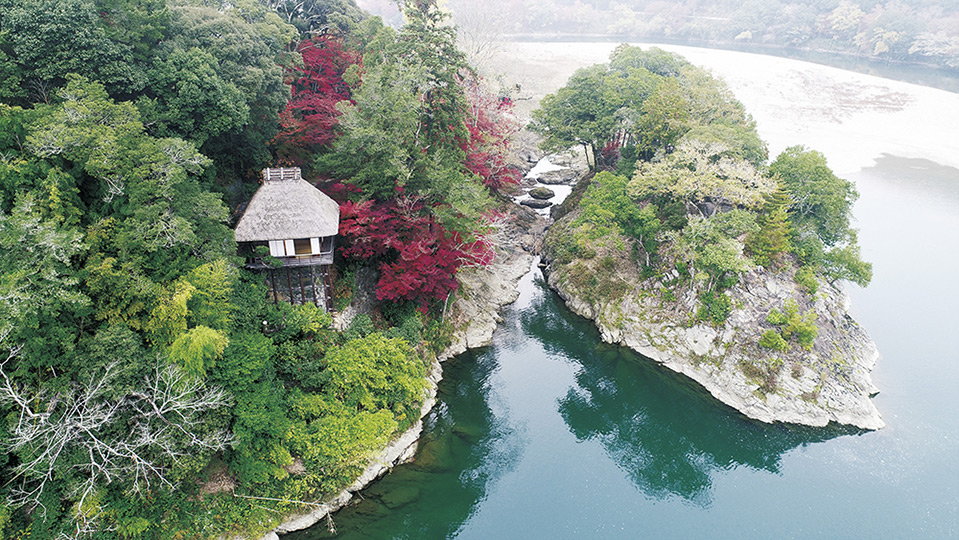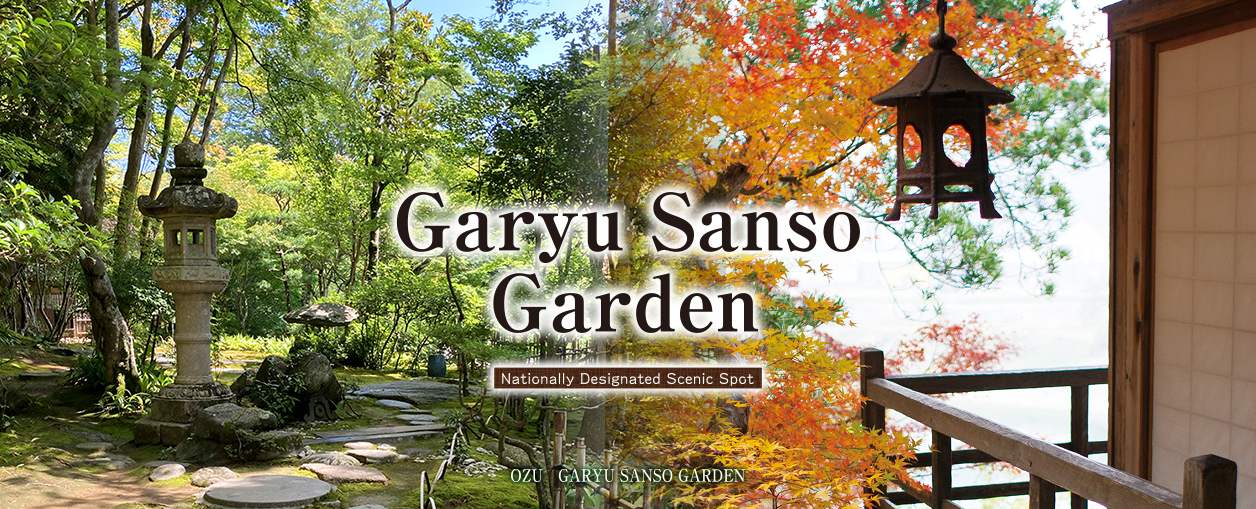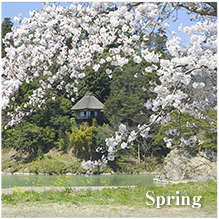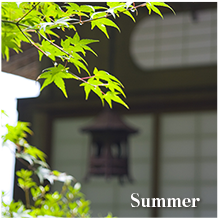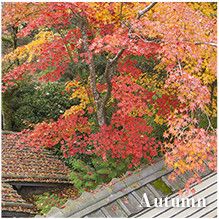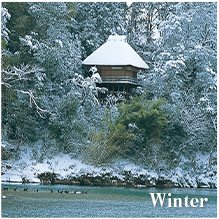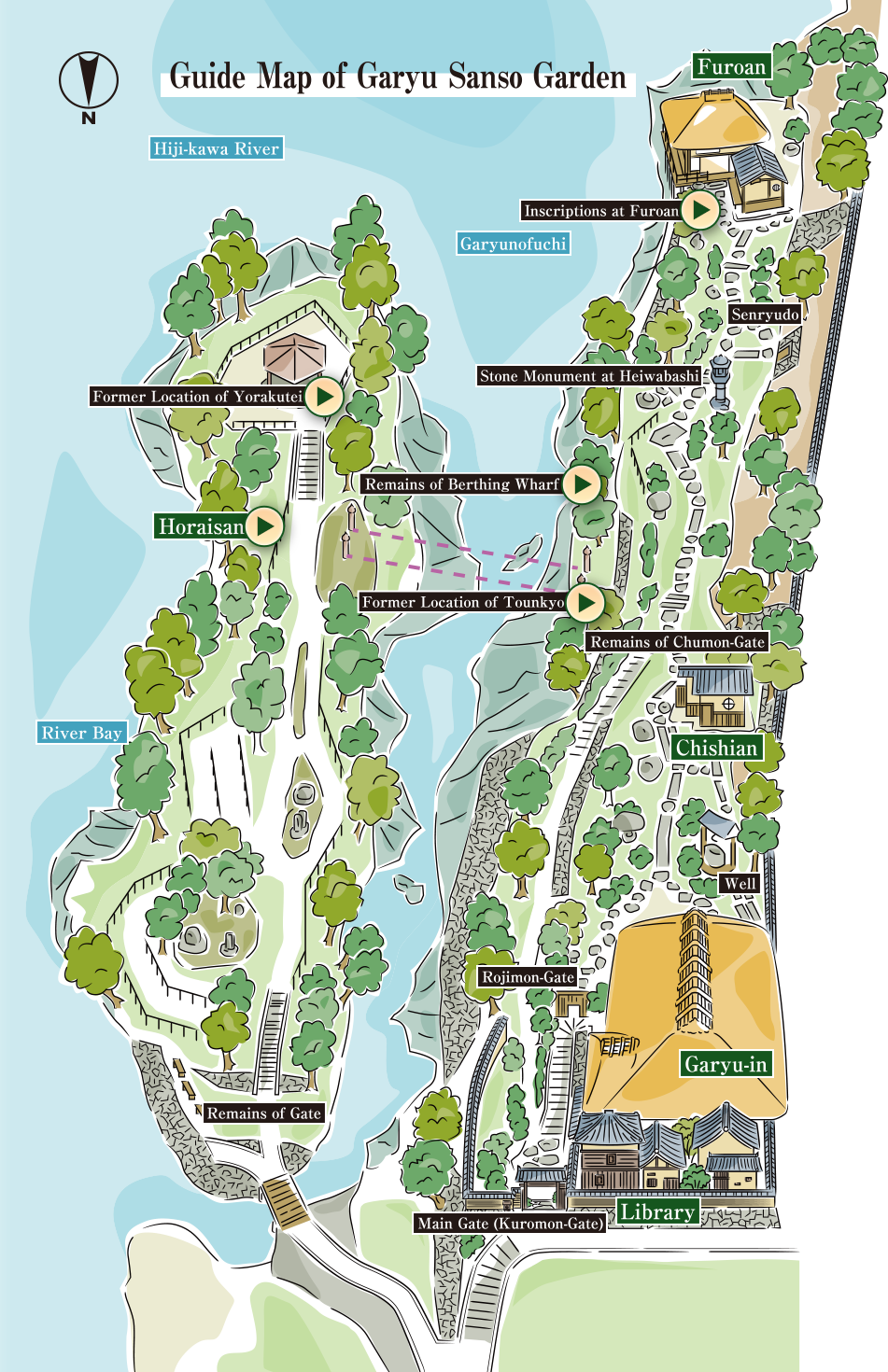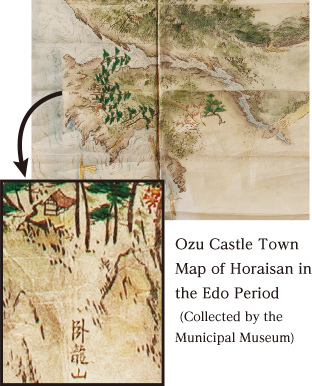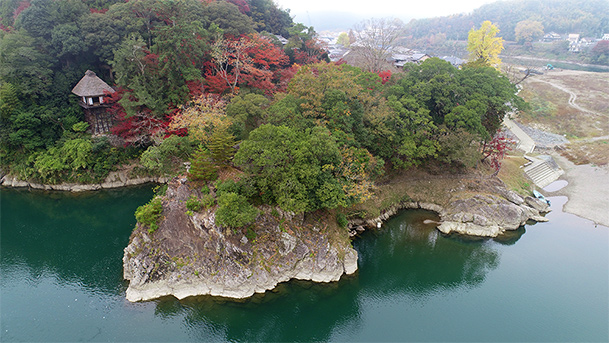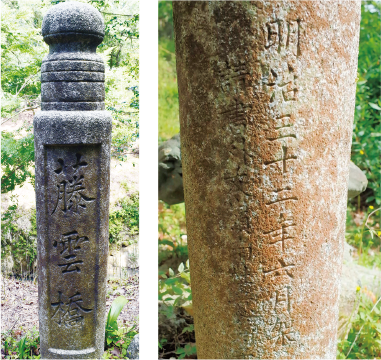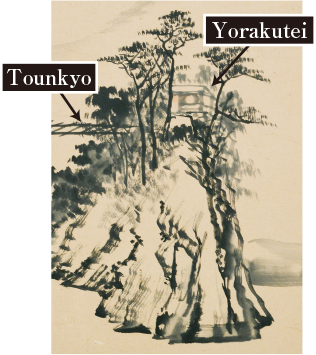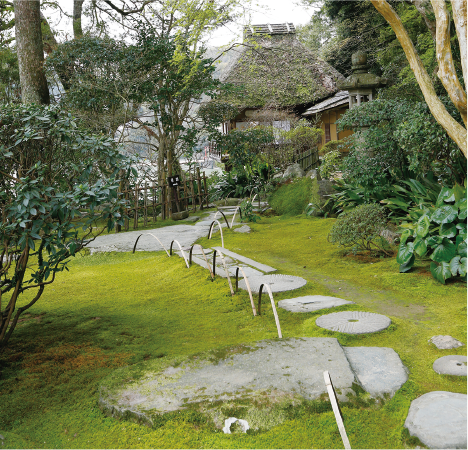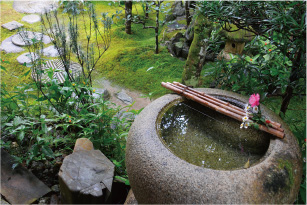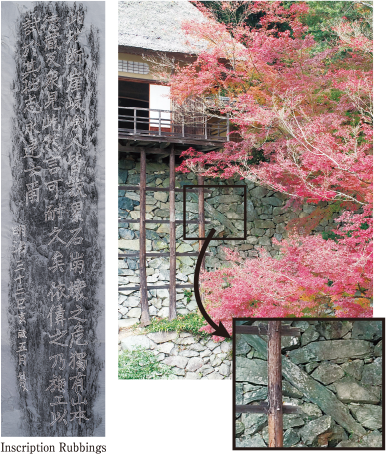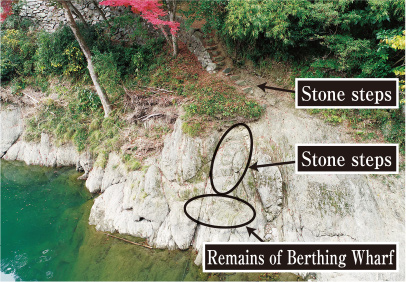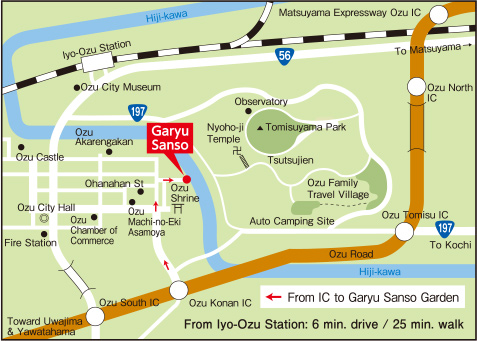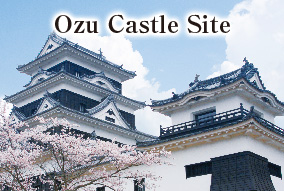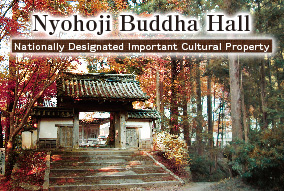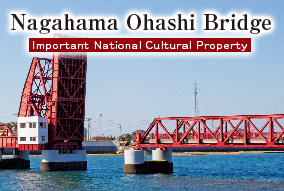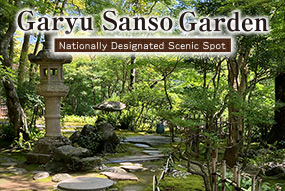
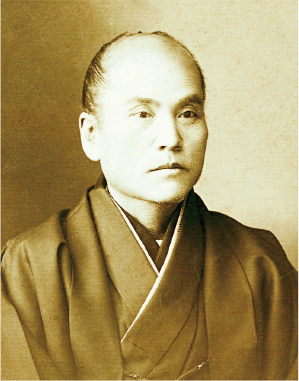
The area around the Hiji-kawa River, where the Garyu Sanso Garden is located, has been a famous scenic spot since the Edo period, and the name of “Garyu (the Reclining Dragon)” is believed to be due to the shape of Horaisan, a small island in the Hiji-kawa River, resembling a reclining dragon. In the late Meiji period, the Garyu Sanso Garden was built with the Hiji-kawa River scenic area in front.
It was built by Torajiro Kochi (1853-1909) born in Niiya, Ozu City, a trader who made his fortune by exporting wood wax from his base in Kobe. In order to build villas in his hometown, Ozu, Torajiro bought this land in 1899 (Meiji 32) and constructed these buildings and gardens in 10 years. The three buildings of Garyu-in, Furoan and Library in the Garden have been designated as national important cultural heritage sites.
During the construction, famous craftsmen from Kyoto and gardeners from Kobe were hired, and Torao Nakano, a local master carpenter, was appointed to take charge of the overall situation. Torajiro, who was in Kobe, also gave detailed instructions on the selection of materials and detailed design, showing that Torajiro himself strove for perfection in construction.
However, in 1909 (Meiji 42), shortly after the completion of Garyu Sanso Garden, Torajiro became seriously ill in Kobe and died at the age of 56. Torajiro’s tomb was built on the opposite bank of Garyu Sanso Garden, facing and guarding the Garden even now.
| 1899(Meiji 32) |
The land of Garyu Sanso Garden and Horaisan was acquired |
| Construction of stone walls under the Furoan |
| 1990(Meiji 33) |
Construction of Furoan began |
| 1901 (Meiji 34) |
The construction of Furoan was completed |
| 1903(Meiji 36) |
Additional land of Garyu Sanso Garden was acquired |
| 1904(Meiji 37) |
Construction of Garyu-in began |
| The library frame was completed |
| 1905(Meiji 38) |
The main beam of Garyu-in was raised |
| 1906(Meiji 39) |
The construction of Chishian (bathroom) was completed |
| 1909(Meiji 42) |
Torajiro Kochi died (age of 56) |
